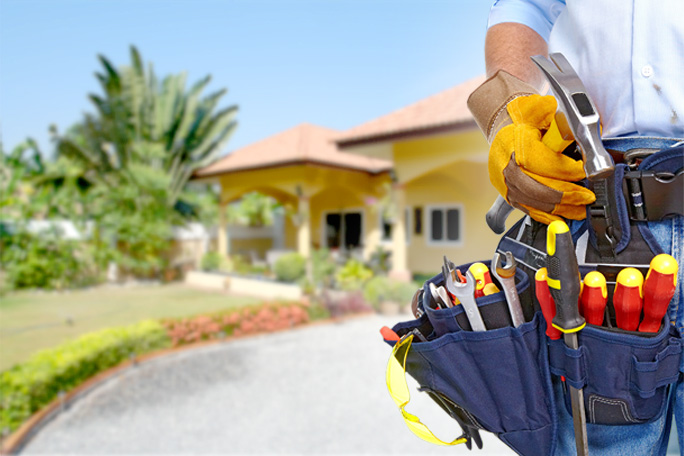
Rent Manager offers a comprehensive property management platform. It allows users to automate many tasks, such as maintenance, billing, and communications. This portal lets potential tenants view the property, make maintenance requests, and submit lease applications online.
The software is compatible with both Macs and Windows. The software is also available in the cloud. This allows property managers to access the software from anywhere in the world, regardless of whether they are at work or on the move. Additionally, the software offers multiple pricing options and a free trial.
Partnering with over two hundred companies makes it easy and convenient to find the right solution. You have three options: the basic, plus, or premium plan. Each one offers different amounts of features. The Premium package offers the most features and is recommended to maximize the benefits of the software.

Rent Manager has a built in website builder. This allows you create a professional looking website. This makes it possible to list vacant units and earn more income. Another feature is electronic payments. You can also send echecks to your tenants who can pay rent via email.
The Tenant Portal is another great feature. You can monitor the activities of your tenant and run background checks. The tenant portal is accessible on iPhone, iPad and desktop. You can also use the app for maintenance tickets, work orders management, and photos from tenants.
One of the more nifty features of the system is the ability to import data from other programs. This allows you to create financial reports as well as an automatic account payable and receivable. The software can take on almost any task property managers may throw at it.
Rent Manager's partner program Zego may be something you might consider if you're considering it. They work together to streamline the distribution of landlord insurance programs. Rent Manager considers them the preferred partner for utility administration.

You can also create and print custom reports. A tenant can have an invoice that lists all services ordered. Also, you can generate a custom chart that displays critical dates. You can also create an automated rent reminder.
Rent Manager is a simplified property management tool that will help you maximize your revenue cycle. This system can be integrated into your daily operations, regardless of whether you are a property manager or a larger real estate management company. Rent Manager offers a variety of support options that will help you succeed.
Rent Manager software can be purchased in two different versions, the Basic or the Plus. Both versions of the software are affordable. The Basic plan costs $1 per unit and the Plus plan $2.25. However, if you're on a tight budget, you can always opt for the Free Package, which is good for 10 properties.
FAQ
What do most handyman charge per hour?
A handyman charges between $50-$75 per hour. They have been doing this for many years. The average time they spend on any job is around 10 hours. They don't have the need to advertise, they are well-known within their neighborhood.
They develop long-lasting customer relationships and specialize.
They are quick, reliable, and affordable. This is the key difference between them and other contractors.
Most people have at least two or three of these guys that they can trust enough to call for help when they need it.
Some people are so talented that they own their own business.
Is it possible to have my faucets fixed by a handyman?
While a handyman might be capable of minor repairs and not needing the proper training, he or she will be able to take on larger projects such as wiring up a house, installing custom cabinets, or rewiring it. There are many things a handyman could do for minor home improvements.
What is the cost of handyman services compared to general contractors?
Yes! A handyman can sometimes provide a much cheaper alternative to having a general contractor complete a task. This is especially true when you've never had a contractor complete a task before. Handymen can also speed up the completion time of projects because they are skilled at completing specific tasks faster and more efficiently.
Statistics
- According to the U.S. Bureau of Labor Statistics, in May 2020, there are 1,357,630 handymen employed in the U.S.. (angi.com)
- With a strong housing market, the handyman and general maintenance worker industry are expected to grow by nearly 10% in the next decade. (housecallpro.com)
- A franchise was approximately $110,000 with a franchise fee of $14,900, according to a spokesperson for a national handyman franchise. (en.wikipedia.org)
- Mila keeps a commission of 20% for each completed service performed by Friends and charges various service fees regarding work done by Pros. (appjobs.com)
- More than 20% of homes in America have outdoor living spaces, including decks and patios. (mrhandyman.com)
External Links
How To
How to Replace Broken Tiles
Step 1: Take away the old tiles.
Remove the old tiles from your flooring and put them aside. You'll want to keep these intact if you use them later. To avoid any problems with replacements, take note of the pieces that have been damaged or lost.
Step 2 - Choose New Tiles
Here are some options for tile repair.
-
You should find a similar tile to the one that you've just taken out.
-
You can use the measurements taken when you removed the tile to locate a matching piece. This will allow you to quickly find the right size, without having to measure again.
-
Look for various colors, patterns, textures, sizes, shapes, etc.
-
Consider what grout you'd like to use (if any). Some people like a consistent color while others prefer mixing it.
-
You should ensure that the tile you choose is resistant to moisture.
-
The final thing to consider is the location of the tile. It will save you time and money if you make sure there's enough space for the proper installation.
-
Once you've chosen your tile, order it online or call your local Lowe's store to place your order.
Step 3 - Place the tiles.
Install your tiles using the same method you used before. Make sure they are aligned correctly so that they fit together perfectly.
Step 4 - Clean up
Be sure to vacuum up all crumbs and debris before applying the last layer.
This will prevent dirt and dust from settling into the cracks between the tiles that could cause mold.
Step 5: Sand down the Floor
After cleaning, sand the floors to remove any particles.
Step 6 - Close the door
Once the floor has been completely smoothed, apply the protective coatings on the tiles. You should wait until this stage as wet paint can stain new tiles.
You can always use a "damp and dry" product on your floors to protect them from staining.
However, it won't cover every possible problem that may occur after you've installed your new tiles. For example, if you have a lot of kids running around, you may want to consider using an anti-slip coating on top of the protective layer.
Finally, do not forget to keep the protective sealer on for several more weeks before you move back into your home.